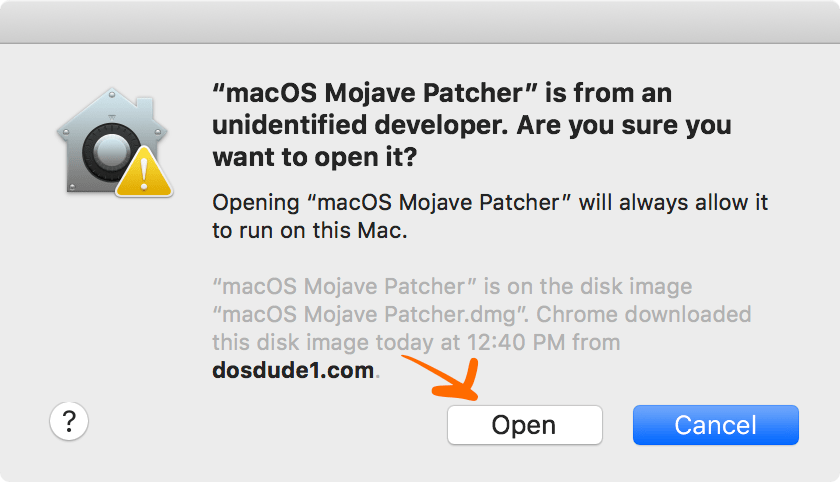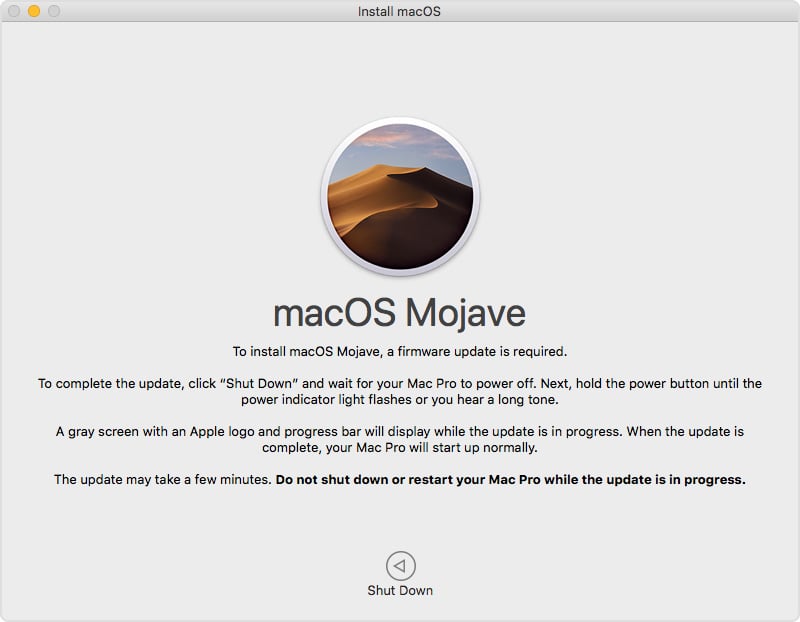Foolproof way to update the 2010 - 2012 Mac Pro 5,1 to the 144.0.0.0.0 firmware
Updating the firmware on a Mac Pro isn't difficult, but it is possible to "miss" firmware upgrades. This guide is for anyone looking to get to the latest (and most likely last) firmware released for the Mac Pro 5,1s, without having to install Mojave 10.14.x, or if you already have installed Mojave, or are looking to install Mojave. My first try, my firmware was stuck at 138.0.0.0.0.x even when running Mojave 10.14.6. Updating the firmware adds key funcitonality to the Mac Pro 5,1s, most notably native NVMe m.2 boot support. To learn more about Firmware and the Mac Pro 5,1s, see the Firmware Upgrades section of my Mac Pro Upgrade Guide.
These aren't the only instructions on the web, as MP5,1: What you have to do to upgrade to Mojave (BootROM upgrade instructions thread) for firmware upgrading. However, this the method I've found most reliable for users who are having firmware troubles.
Step 0: Remove unsupported GPUs
The biggest change for macOS Mojave is the deprecation of OpenGL and OpenCL. OpenGL has been a thorn in Apple's side for quite some time, as it's been nearly dead for years. Vulkan, the OpenGL successor, wasn't quite ready for primetime when Apple originally created Metal for iOS and thus decided to port it macOS. Despite the annoyingness of having to meet the requirements, it was a necessary evil. Mojave will not install if you have a non-metal supported GPU.
Note: some users are reporting they had to remove all PCIe cards sans their storage controller (SATA card) and GPU to install the firmware update. I did not. If you encounter issues, try removing additional PCIe cards.
Step 1: Have a 10.13 drive
Unfortunately, this is the biggest pain if you've already updated. You'll need a separate volume to boot into 10.13. Amazon and Newegg each have 120 GB SSDs for under $20 USD if you need a temporary drive to install macOS 10.13 on. (upside is you can buy a USB case and turn into a very fast USB 3.0 drive afterward or return it). You can get old versions of macOS via the Mac using DosDude1's installer if you can't access it. If you have no intention to upgrade to Mojave or already have it installed., don't worry. We won't be installing Mojave.
Step 2: Boot 10.13
The next step is pretty straight forward, boot into your install of macOS 10.13 if you haven't already.
Step 3: Download 10.14.6 Combined installer
Fortunately, firmware flashing does not require updating in a particular order. I went from 138.0.0.0.0 to 144.0.0.0.0 without any problems. There's several avenues for this, including the Mac App store, but when I used the Mac App Store route, I didn't get the combined OS installer (The Mojave installer + all the updates to Mojave). The easiest way to obtain the final combined update for Mojave is to use Dosdude1's installer. Much like before, download the OS DosDude1's installer, even though we have supported hardware but with the patcher for 10.14.
Clarification: You do not need to use the DosDude1 installer, as you can grab the update via the App store or other sources but I found this easier. Apparently this link was posted this on MacRumors and a few posters didn't read the full instructions and suggested that I was advocating using DOSdude1 on the OS. I am not. The Mac Pro 4,1/5.1 does not need DOSDude1, so do not run the patcher on Mojave. The Patcher just happens to be extremely reliable about fetching the correct version, and skips the hassle of the App Store.
- Go to DOSdude1 Mojave patcher and download it
-
Launch the patcher.

Depending on your security settings, your mac may suggest it's from an unverified developer. Go to the system prefs, Security and Privacy (general), and allow the app to open.

You'll be bugged one last time.

The patcher should warn you that you are on supported hardware.

This is fine, ignore the message. Within the patcher, select the download Mojave from the Tools menu.

- Once the download has completed, quit DOSdude1's patcher.
Step 4: Launch the installer and click shut down
The installer should bring up a message about firmware and a shutdown message. This will not start the Mojave installer, only the firmware.

Step 5: Boot the Mac
Using the instructions in the previous image, press and hold the button until it blinks. If you do not have an EFI enabled GPU (see more about EFI in my Mac Pro Upgrade guide), you will not see any video output.
I trimmed down the video, as it took about 15 seconds of holding before the button flashed. After the button flashed, the internal speaker emmitted a long lowfi "boop" sound.
Step 5: Verify
Go to About this Mac, and click system report. Under the first screen, look for the "Boot Rom" text. This should list your firmware version. From here, you can continue using 10.13.6, upgrade, or boot to your 10.14 volume.
The 144.0.0.0.0 firmware works with any version of macOS your Mac Pro supports.
Updated: November 13th, 2019 MacRumors feedback
Updated: November 4th, 2019 based on Feedback from Mac Pro Users user group on Facebook.